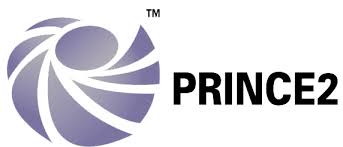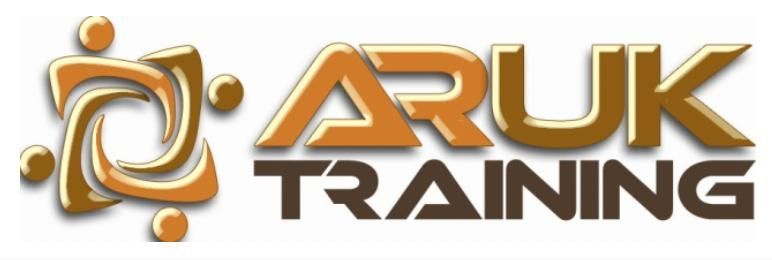
Hazard Identification and Risk Assessment
Course ID: 2505190101040EGI
Course Dates : 19/05/25 Course Duration : 5 Studying Day/s Course Location: London, UK
Language: Bilingual
Course Category: Professional and CPD Training Programs
Course Subcategories: Health, Safety and Risk Management
Course Certified By: * Projacs Academy
* Professional Training and CPD Programs
Certification Will Be Issued From :
KSA
Course Fees: £4,867.80
Vat Not Included in the price. VAT may vary depending on the country where the course or workshop is held.
Click to Pay
Date has passed please contact us Sales@e-s-hub.com
Course Information
Introduction
Risk management is an essential aspect of any workplace, regardless of industry or size. The ability to effectively identify hazards and assess risks is fundamental to ensuring the safety and well-being of employees, stakeholders, and the general public. Hazard Identification and Risk Assessment (HIRA) are proactive processes that help organizations recognize potential dangers before they escalate into costly or harmful incidents. These processes are crucial in fostering a culture of safety and compliance, reducing the likelihood of accidents, and ensuring regulatory standards are met.
Hazard identification involves recognizing and cataloging potential sources of harm within a workplace. These hazards can stem from various factors such as machinery, environmental conditions, human error, or operational procedures. Once identified, the next step is to conduct a risk assessment, where the severity and likelihood of harm are evaluated. Risk assessment helps prioritize which hazards require immediate attention and which can be mitigated over time. By assessing both the likelihood of an incident occurring and the potential severity of its consequences, organizations can develop more targeted and effective safety measures.
Risk assessment tools and methodologies vary depending on the complexity and nature of the workplace, but some common techniques include qualitative and quantitative assessments, risk matrices, and failure modes and effects analysis (FMEA). Effective hazard identification and risk assessment not only help to prevent accidents but also streamline operations, improve employee morale, and enhance the organization’s reputation. These assessments are key to maintaining workplace safety and aligning with industry best practices and legal obligations.
The increasing focus on health, safety, and environmental standards has led to a greater emphasis on robust risk management processes across industries. Regulatory bodies, such as OSHA and ISO, mandate organizations to conduct risk assessments regularly and ensure proper safety measures are in place. This course aims to equip participants with the knowledge and skills necessary to conduct thorough hazard identification and risk assessments in accordance with global standards and industry-specific requirements.
Moreover, a key part of risk assessment is continuous monitoring and revisiting previously identified risks, especially as organizational processes evolve. Hazards that may not have been apparent at the time of initial assessments can emerge later due to changes in technology, processes, or human factors. Regular re-assessment ensures that organizations remain responsive and adaptive in their approach to safety, ensuring long-term effectiveness of their risk management strategies.
Through practical exercises, real-life case studies, and expert insights, this course will empower participants to take a comprehensive approach to hazard identification and risk assessment. Participants will leave the course with the tools and strategies needed to assess, mitigate, and manage risks in their respective environments, ensuring a safer and more compliant workplace.
Objectives
By attending this course, participants will be able to:
Understand the principles and importance of hazard identification and risk assessment in workplace safety.
Identify various types of hazards, including physical, chemical, ergonomic, and psychosocial hazards.
Apply risk assessment techniques to evaluate the severity and probability of identified risks.
Develop a prioritized risk management plan, including risk mitigation strategies and controls.
Utilize industry-standard tools and methodologies such as risk matrices, FMEA, and hazard analysis to assess and manage risks.
Implement strategies for continuous monitoring and reviewing of risks within an organization.
Ensure compliance with local and international safety regulations, including OSHA and ISO standards.
Communicate risk findings effectively to stakeholders and contribute to safety management programs.
Who Should Attend?
This course is ideal for:
Safety Officers, Health and Safety Managers, and Environmental Health Officers.
Risk Management Professionals and Consultants.
Facility Managers and Supervisors responsible for maintaining workplace safety.
Compliance Officers and Legal Advisors involved in regulatory adherence.
Project Managers overseeing construction, manufacturing, or other operational activities.
Employees seeking to enhance their understanding of workplace safety and risk management processes.
Senior leaders and executives looking to improve the overall safety culture within their organizations.
Consultants advising organizations on risk management strategies and safety compliance.
Training Method
• Pre-assessment
• Live group instruction
• Use of real-world examples, case studies and exercises
• Interactive participation and discussion
• Power point presentation, LCD and flip chart
• Group activities and tests
• Each participant receives a 7” Tablet containing a copy of the presentation, slides and handouts
• Post-assessment
Program Support
This program is supported by:
* Interactive discussions
* Role-play
* Case studies and highlight the techniques available to the participants.
Daily Agenda
The course agenda will be as follows:
• Technical Session 08.30-10.00 am
• Coffee Break 10.00-10.15 am
• Technical Session 10.15-12.15 noon
• Coffee Break 12.15-12.45 pm
• Technical Session 12.45-02.30 pm
• Course Ends 02.30 pm
Course Outlines
Introduction to Hazard Identification and Risk Assessment
Overview of hazard identification and risk assessment processes.
Regulatory frameworks and international standards for hazard identification and risk assessment (e.g., OSHA, ISO).
Understanding workplace hazards: physical, chemical, biological, ergonomic, and psychosocial.
The risk assessment process: Identification, evaluation, and prioritization of risks.
Day 2:
Risk Assessment Methodologies and Techniques
Risk matrix: Defining severity and likelihood of risks.
Qualitative vs. quantitative risk assessments: Key differences and applications.
Failure Modes and Effects Analysis (FMEA) and its use in risk assessments.
Hazard analysis tools: Bowtie diagrams, Fault Tree Analysis (FTA), and Event Tree Analysis (ETA).
Day 3:
Risk Evaluation and Control Measures
Evaluating the potential impact of identified hazards on people, property, and processes.
Hierarchy of controls: Elimination, substitution, engineering controls, administrative controls, and personal protective equipment (PPE).
Developing and implementing risk mitigation strategies.
Case study analysis: Reviewing past incidents and identifying how risk assessments could have mitigated harm.
Day 4:
Managing Risks in Different Work Environments
Risk assessments for construction, manufacturing, and office environments.
Assessing psychosocial risks: Stress, burnout, and mental health hazards.
Tools for continuous monitoring and re-assessing risks.
Integrating hazard identification and risk assessment into safety management systems.
Day 5:
Communicating and Reporting Risk Assessment Findings
Best practices for documenting and reporting hazard identification and risk assessments.
Communicating risk findings to different stakeholders: Management, employees, and regulators.
Legal implications and the importance of maintaining proper risk documentation.
Group exercise: Conducting a complete risk assessment and presenting findings to stakeholders.



















































